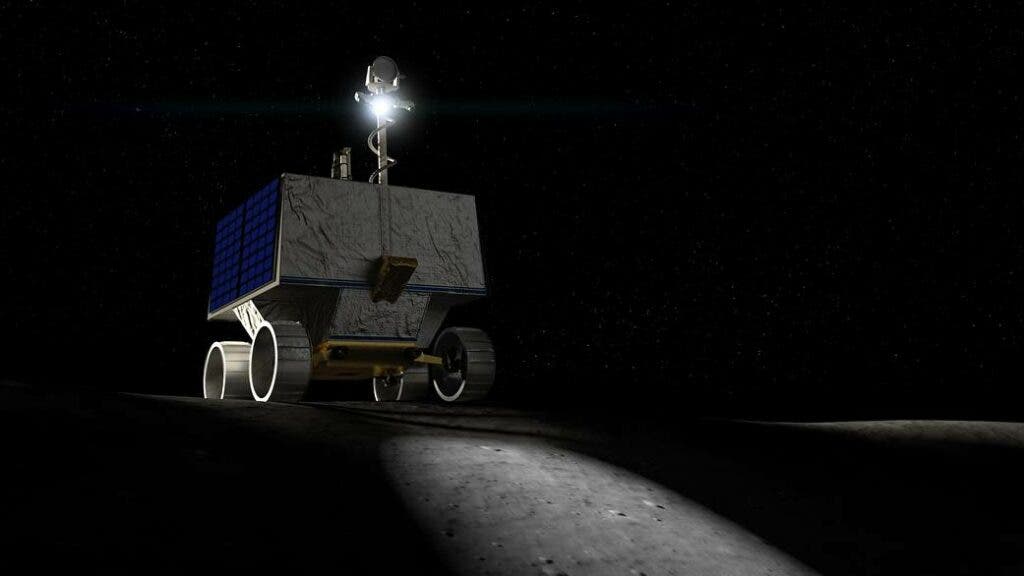Late in 2023, a golf cart-sized rover will be landing in the southern pole of the moon in an effort to study and map water ice deposits ahead of its Artemis program. Now, NASA has revealed the landing spot of the Volatiles Investigating Polar Exploration Rover, or VIPER, for its 100-day mission – the western edge of the mountainous Nobile Crater.
“Once on the lunar surface, VIPER will provide ground truth measurements for the presence of water and other resources at the Moon’s South Pole, and the areas surrounding Nobile Crater showed the most promise in this scientific pursuit,” said Thomas Zurbuchen, associate administrator for science at NASA Headquarters. “The data VIPER returns will provide lunar scientists around the world with further insight into our Moon’s cosmic origin, evolution, and history, and it will also help inform future Artemis missions to the Moon and beyond by enabling us to better understand the lunar environment in these previously unexplored areas hundreds of thousands of miles away.”
With the ultimate goal of establishing a sustainable human presence on the Moon by 2028, finding a steady source of water would be extremely beneficial, to say the least. Thanks to prior satellite missions, it is known that ice water resides at the lunar poles. However, in order to utilize said water, researchers need to know a little more. During its tenure on the Moon, the rover will venture into permanently shadowed craters, some of the coldest known spots in the solar system.
In its foray into the Nobile Crater region, the rover will attempt to tell us where specifically the water is most likely to be found, how easy it is to access, and how much of it comes in the form of ice crystals versus being bound to minerals. This will not only reveal how to extract the water to sustainably live on the Moon, but it will also give us insights into the history and origin of water in the inner solar system, including our own planet.
VIPER is equipped with four instruments, including the Regolith and Ice Drill for Exploring New Terrains (TRIDENT) hammer drill, the Mass Spectrometer Observing Lunar Operations (MSolo) instrument, the Near-Infrared Volatiles Spectrometer System (NIRVSS), and the Neutron Spectrometer System (NSS). The rover’s design also calls for using the first headlights on a lunar rover to aid in exploring the shadowed regions. Running on solar power, VIPER will need to quickly maneuver around the extreme swings in light and dark at the lunar South Pole.
“VIPER will be the most capable robot NASA has ever sent to the lunar surface and allow us to explore parts of the Moon we’ve never seen,” said Sarah Noble, program scientist for VIPER at NASA Headquarters. “The rover will teach us about the origin and distribution of water on the Moon and prepare us to harvest resources 240,000 miles from Earth that could be used to safely send astronauts even farther into space, including Mars.”
The lunar rover will launch on a SpaceX Falcon-Heavy rocket for delivery to the Moon by Astrobotic’s Griffin lander under NASA’s Commercial Lunar Payload Services initiative.



